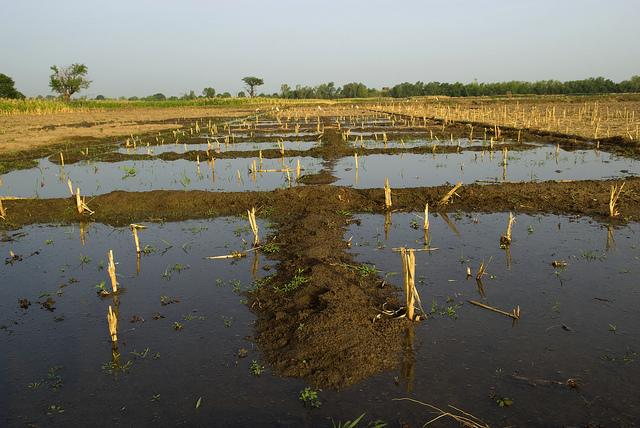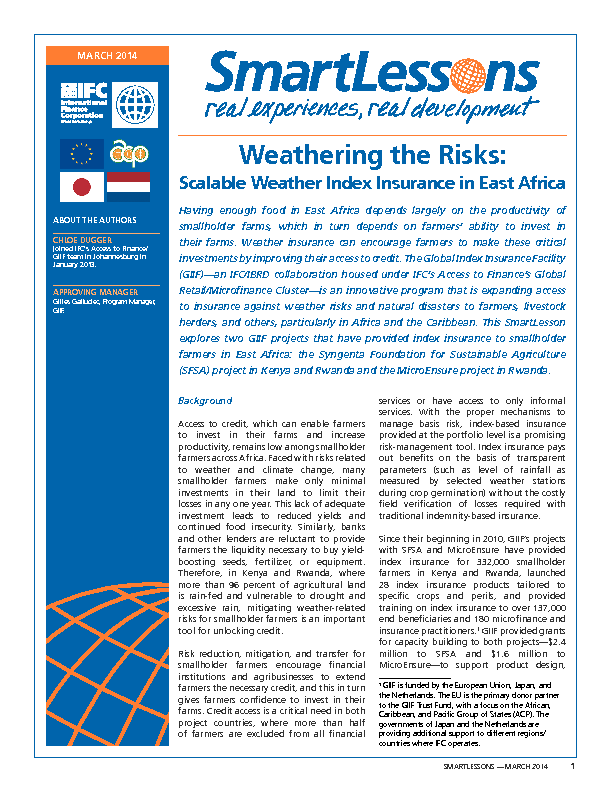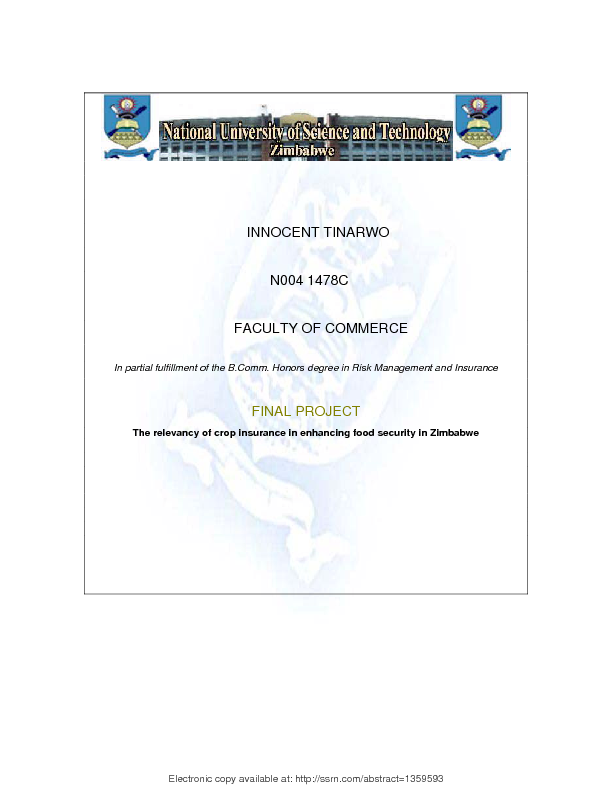GIIF's Senior Technical Specialist shares key lessons from projects in Africa
Sub-Saharan Africa

Topics:
Country:
As Rwandan farmers face increasingly erratic rainfall, an innovative program launched today will use automated weather stations to offer 20,000 farmers in the Southern and Western provinces of Rwanda low-cost insurance to protect their loans for high-yielding seeds, fertilizers, and other farm inputs.

Country:
PlaNet Guarantee, member of the PlaNet Finance Group, and the GIIF come together to launch the first regional management platform for index insurance. The objective is to cover 60 000 farmers in West Africa by 2015. While agriculture remains the main economic sector in West Africa (on average 30% of the GDP of countries in the region and 70% of the workforce), no risk management tool is offered to farmers to secure their income. In case of drought, floods, or due to other factors that could cause a significant drop in yields, farmers currently receive no form of protection. The traditional

Topics:
Having enough food in East Africa depends largely on the productivity of smallholder farms, which in turn depends on farmers’ ability to invest in their farms. Weather insurance can encourage farmers to make these critical investments by improving their access to credit. The Global Index Insurance Facility (GIIF)—an IFC/IBRD collaboration housed under IFC’s Access to Finance’s Global Retail/Microfinance Cluster—is an innovative program that is expanding access to insurance against weather risks and natural disasters to farmers, livestock herders, and others, particularly in Africa and the
Country:
Region:
The Syngenta Foundation’s Kilimo Salama weather index insurance program has taken off in Kenya and has recently expanded to Rwanda and Tanzania. Beginning in 2009 with a pilot project offering index insurance to 200 farmers, at last count 51,000 farmers in Kenya and 14,000 farmers in Rwanda have the insurance. In 2011, Kilimo Salama’s partner UAP Insurance collected KSh 19 million in premium payments, and premium revenue has nearly doubled to KSh 33 million in just the first six months of 2012. These premium volumes are approaching levels than can make index insurance economically sustainable

Food security is a critical phenomenon amongst developing countries. Most nations are now placing greater emphasis on crop insurance as a means of managing farming risk and enhancing food security. With Southern Africa having been hit by weather hazards such as floods and drought over the past few decades and its agricultural output continuing its downward plunge, the paper explores the relevancy of crop insurance in enhancing food security and facilitating agricultural productivity in Zimbabwe.

Published on:
Country:
Nairobi, Kenya, April 22, 2013—IFC, a member of the World Bank Group, announced that a Kenyan partner of the Global Index Insurance Facility (GIIF), a program managed by IFC and jointly implemented with IBRD, reached a major milestone in April 2013 in improving income security for 100,000 farmers by providing them with insurance against adverse weather. The milestone was reached through the work of Kilimo Salama, a social enterprise launched by the Syngenta Foundation for Sustainable Agriculture with the support of GIIF. Started with only 185 farmers in Kenya in 2009, Kilimo Salama allowed
Fifty-five year old Niyitegeka Veneranda lives in rural Rwanda. She and her husband are parents to seven children and grandparents to five. They farm less than a hectare of their own land, yet she has been able to build a small house, feed her family, and send her last three children to school. She expanded her rice production recently with a loan from a local bank made possible through agricultural insurance, and plans to expand her acreage with another loan next year.
Unlike conventional insurance, which indemnifies policyholders for verifiable production losses arising from multiple perils, index insurance indemnifies policyholders based on the observed value of a specified “index” or some other closely related variable that is highly correlated with losses. Index insurance exhibits lower transaction costs than conventional insurance, potentially making it more affordable to the poor in the developing world. However, it also offers less effective individual risk protection. This article provides a review of recent theoretical and empirical research on index insurance for developing countries and summarizes lessons learned from index insurance projects implemented in the developing world since 2000
Content owner:
Business Daily
Topics:
Thousands of farmers in Moiben, Eldoret have always known that drought comes after every 10 years. But every once in a while the pattern is broken and they are caught off-guard as was the case in 1984 and in 2009. However, in the midst of the dark clouds of hunger, there was a silver lining that got them smiling last year— a crop insurance product that promised to change their fortunes. This is a first for small-scale farmers in Kenya who produce more than 70 per cent of the country’s food output.
